Polaris Off-Road Vehicles should not be shifted while driving. ACE, GENERAL, RANGER, RZR, Scrambler and Sportsman vehicles are equipped with Polaris Variable Transmissions (PVT). Made up of an infinitely variable drive clutch, driven clutch and belt, it changes gear range to match vehicle power, engine output and changing load conditions.
In addition, Polaris Off-Road Vehicles have a gear selector for use when the vehicle is not in motion. ORVs have five gears: park (P), reverse (R), neutral (N), low gear (L) and high gear (H).
To change gears, stop the vehicle and, with the engine idling and brakes applied, move the shift lever to the desired gear. Do not attempt to shift gears with engine speed above idle or while the vehicle is moving. Attempting to shift the transmission while the vehicle is moving could result in damage to the transmission.
Low gear is intended for lower speed and hauling or towing loads. Always shift into low gear when operating in rough terrain or over obstacles, loading the vehicle onto a trailer, towing heavy loads or operating consistently at low speeds. On Scrambler and Sportsman ATVs, use low gear when pulling a heavy load at less than 7 miles per hour for extended periods and when operating uphill at a slow speed.
High gear is intended for higher speed use on hard-packed surfaces with light loads. Using high gear for heavy loads, hilly terrain or in wet, muddy conditions will decrease drive belt life.
For more on the transmission and drive system of Polaris Off-Road Vehicles, listen to the Off-Road Vehicle Drive System Basics episode of the Polaris Podcast.
Unless noted, trademarks are the property of Polaris Industries Inc.
© 2022 Polaris Industries Inc.
Keyword(s) shift , shifting , automatic , gears , gear , atv , ace , general , ranger , rzr , scrambler , sportsman ,
Troubleshooting an ATV that won’t go into gear or won’t shift gears can be quite complicated, but not always.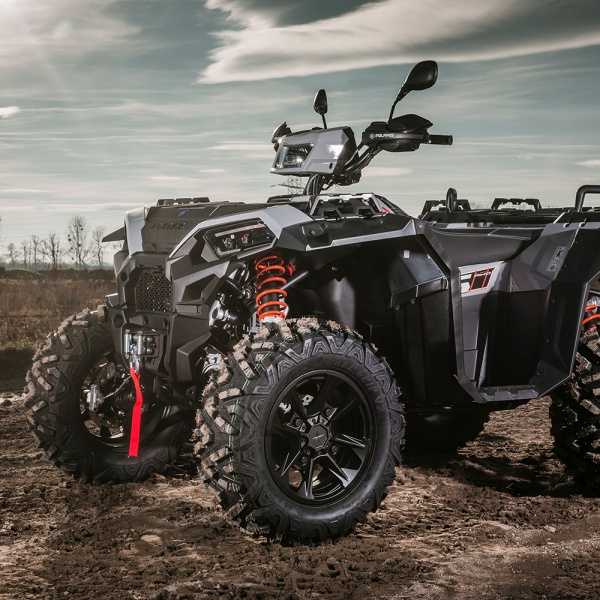 Whether you can address the issue on your own depends on the severity of the problem and your mechanical skill level.
Whether you can address the issue on your own depends on the severity of the problem and your mechanical skill level.
ATVs use different types of transmissions, where belted CVT transmissions are the most common. The possible causes and the steps required to solve the problem depend on the type of transmission your ATV has.
This post covers some of the most common causes if your ATV doesn’t go into gear. It is meant to guide where to begin your troubleshooting, not as a complete repair guide for all ATV transmissions.
The service manual for your specific brand and model will provide more detailed troubleshooting procedures for your transmission issues.
Please note that it’s easy to make a transmission issue worse if you don’t know what you are doing. Some of the repairs require special tools such as a clutch puller or a clutch disassembly tool. If the repair seems intimidating to you or you do not have the right tools, it is recommended that you take the bike to a dealer technician.
Page Contents
We recommend that you begin the troubleshooting by testing whether you can shift gears when the engine is not running. This initial test allows you to narrow down the possible culprits of your gear-shifting issue.
If you can shift gears with the engine off, you know that the gear-shifting mechanism, as well as the inside of the gearbox, most likely works fine.
Gear shifting problems that are only present when the engine is running are usually clutch- or belt-related (Step 3) or caused by a high idle (Step 2). You may find that the bike wants to creep or move forward when in gear at idle. But even without creep, the problem may be with one of these components.
If you are, however, unable to shift gears with the engine off, we recommend you jump straight down to Step 4.
Many ATVs come with an automatic clutch that engages when you apply throttle, and the clutch speeds up. The same principle applies whether you have a wet disc clutch or a dry clutch, as you find on a belted CVT transmission.
The same principle applies whether you have a wet disc clutch or a dry clutch, as you find on a belted CVT transmission.
If the ATV, for some reason, idles higher than it’s supposed to, it may cause the clutch to engage slightly, putting a small but constant tension to the metal gears inside the gearbox. This pressure on the gears makes the ATV very hard to shift.
Most ATVs should idle around 1100-1200RPM. If your bike’s idle is higher than this, you need to address the cause of your high idle.
For carbureted ATVs, there will be an adjustment screw to set the idle. Your user manual will provide the correct setting for your bike. Adjusting the idle on a fuel-injected ATV is usually a job for a mechanic.
When idling, the primary clutch on a belted CVT transmission is supposed to spin freely without engaging (not pulling on the belt). This relieves the tension on the gearbox and allows you to shift gears.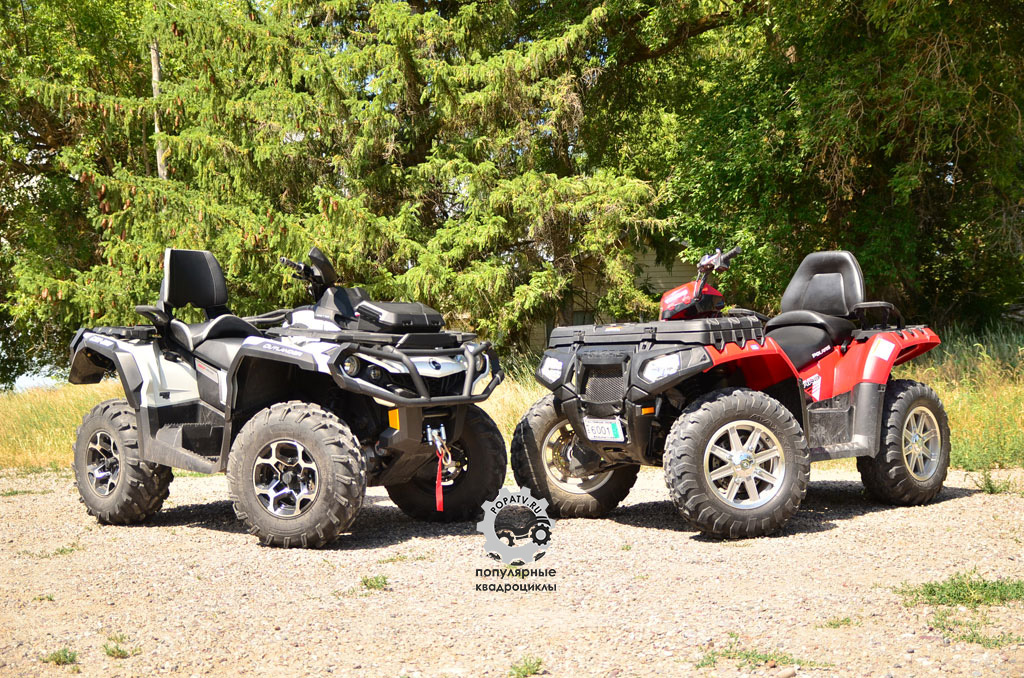
When you hit the throttle, the primary clutch closes and starts pulling the belt. The belt makes the secondary (driven) clutch spin, which creates tension between the gears inside the gearbox.
This is how a CVT transmission works:
But when the transmission is not tuned correctly or has a mechanical issue, it may be engaging and spinning the secondary clutch even at idle.
To troubleshoot an issue like this, you need to remove the belt cover to inspect the clutches and see how they behave when the engine runs, both at idle and when revving in neutral.
Please note that the clutches will be spinning at high speeds. Keep your hands and all loose objects clear of clutches to avoid potentially fatal damage.
If the primary clutch is packed with dirt, it may bind or not open enough to release the belt. Now is a good time to pull the clutches for proper cleaning and service.
The springs inside a CVT transmission clutch may weaken over time, preventing the clutch from functioning as it is supposed to. Clutch springs are replaceable, but you may need special tools to pull and disassemble the clutch.
Clutch springs are replaceable, but you may need special tools to pull and disassemble the clutch.
If the motor mount is bad or has come loose, the primary clutch may be out of alignment. Use a pry bar to see if you can lift the whole engine. You should barely be able to see the engine move, if at all.
The drive belt should ride in the clutch assembly center, not touching the primary’s two clutch sheaves. If it does rub against one of the sheaves, it will cause unwanted tension on the belt.
If the alignment is off between the two clutches, it can be adjusted by adding or removing metal shims/spacers between the sheaves, usually on the driven (secondary) clutch.
Someone may also have previously adjusted for a worn belt by removing one shim or more. When installing a new belt, you may need to add those spacers back to prevent binding, leading to gear shifting issues.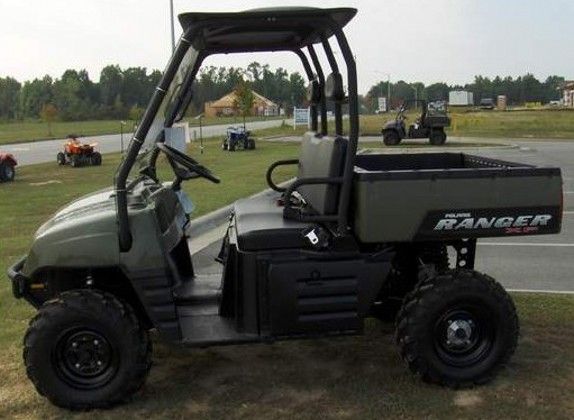
If the drive belt is worn too much, it will ride low on the sheaves, causing a slight creep.
We recommend that you only use OEM belts. There are aftermarket belts available that offer better performance and longevity at a smaller price. But slight variations in production tolerances can cause issues such as the clutch engaging too soon.
Aftermarket belts also use a harder compound to make them last longer, which may wear your clutch sheaves over time.
Remove the belt cover. If the belt is shredded, it may have gotten wrapped around the driven shaft, causing it to bind up.
Polaris ATVs with EBS (engine brake system) have components that may wear out in time. Inspect the EBS fiber washers (one on each side of the EBS bushing) on the primary clutch to see if they are worn out. If the washers are worn, the belt may not ride in the grooves as it should and instead ride one of the sheaves.
Some ATVs with engine brake systems have a primary clutch with a one-way sprag bearing, a so-called one-way clutch. It is supposed to spin freely in one direction and be locked in the other direction. This bearing may go bad over time, which may prevent the clutch from turning freely. It may be hard to tell if the bearing is ok; just a slight drag may cause shifting issues.
In this case, the problem is likely with the gear changing mechanism or the transmission’s internals. Begin by troubleshooting the externals as they are the most accessible.
Some ATVs have adjustable gear linkage. If not adjusted correctly, the bike will not shift as it should.
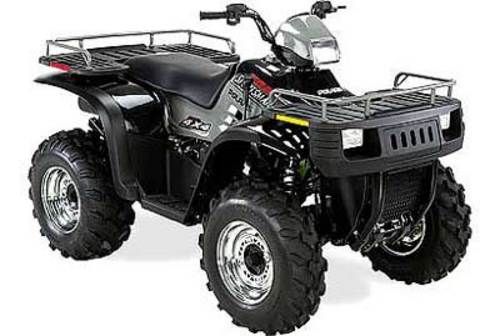
On ATVs that has manual clutch transmissions, you should make sure that:
To test your gearbox for internal damage without splitting the case you can try this method:
One of the most common issues one could be facing with a gearbox’s internals is having a worn or bent shift fork.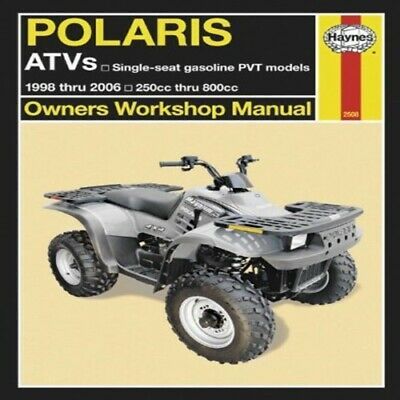 The shift fork is what shifts the gears in place. If it is bent or worn, it can’t push the gears completely in place.
The shift fork is what shifts the gears in place. If it is bent or worn, it can’t push the gears completely in place.
Some ATVs use an oil-sump wet clutch in combination with the dry clutches on the CVT belt transmission. You also have some Honda ATVs with hydrostatic transmissions that use oil to drive the ATV forward.
Here are a few things to check out whenever any of these types of ATVs won’t go into or shift gears.
Make sure the oil level is correct or the bike may not shift as it should.
If the oil is old or contaminated it needs replacing:

It is possible to measure if the oil moves well through the engine using an oil pressure gauge. If the pressure is weak, you may have bad seals and need to open the engine.
ATVs with an electric shifter, like the Honda AS models, uses an electric motor to shift through the gears. If the motor does not work, the bike will not shift gears.
The only way to make it shift is by using the emergency shifter (a short-shifting shaft sticking out the left lower side of the engine, use the supplied gear change tool). If the bike shifts when using the emergency shifter, you need to address the shifter motor.
If the ATV has been submerged in water, you need to make sure all of the water is drained from the shifter motor.
Remove the motor. If the motor does not turn even when hooking it up directly to a battery, it may be burnt out and need replacing.
It is easy to forget that an electric-shift ATV needs electricity to shift. Make sure the battery is properly charged and in good condition.
Related resources:
How to charge an ATV battery
How to troubleshoot an ATV battery that is not charging.
If you try to shift on an electric shift ATV, you may hear the shift motor moving, but it does not shift completely.
You may find that the problem is worse at colder temperatures. Fixing this issue is relatively easy. All you need to do is replace the old gummed-up grease with all-temperature, white lithium grease.
For the complete procedure, go to Hondaatvforums.net
Located on the carburetor, the Honda ES models have an angle sensor that tends to go bad. After replacing the sensor, make sure it is clocked correctly.
When this happens, there is usually no need to worry. In fact, most ATVs are affected by this issue, some more than others.
What happens is that the wheels must be rotated slightly for the gears inside the gearbox to sync (line up).
You may have noticed that this phenomenon gets worse when trying to shift in and out of “park” when standing on a hill.
The best way to avoid this is by applying the parking brake before putting the transmission in “park.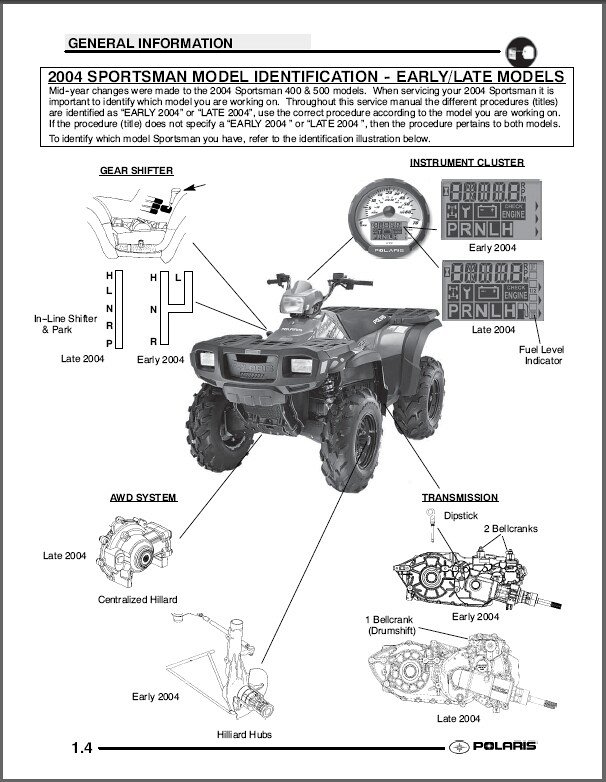 ” This way, the gears won’t bind up, and you will be able to shift in and out of gear effortlessly.
” This way, the gears won’t bind up, and you will be able to shift in and out of gear effortlessly.
Articles
02 Dec
Any wheeled vehicle - from a bicycle to a multi-ton truck - has a transmission in its device: a system that transmits rotation from the engine to the wheels. The operation of the transmission - and therefore the speed of driving - can be controlled by shifting gears. nine0003
Gear shifting is organized differently in each mode of transport. In the article below, we will tell you exactly how to shift gears on ATVs, and what gearboxes are found on such equipment.
Gearboxes for ATVs can be of two types:
 They have a foot clutch or clutch with a lever on the steering wheel (in most cases it is), and a foot shifter. Manual transmission usually has 4 “forward” gears, neutral and reverse. nine0008
They have a foot clutch or clutch with a lever on the steering wheel (in most cases it is), and a foot shifter. Manual transmission usually has 4 “forward” gears, neutral and reverse. nine0008 Rare and mostly found in older models, but other variations can be found. For example - "automatic" with the ability to manually shift gears.
Manual ATVs are a little more difficult to drive (at least at first, until you get used to it), but you can more accurately select the appropriate mode. And vice versa: CVT "boxes" are much easier to operate, they are easy to master for a beginner who gets behind the wheel of an ATV for the first time. But on the other hand, with active driving along a route with variable difficulty, riding a CVT will be a little less convenient.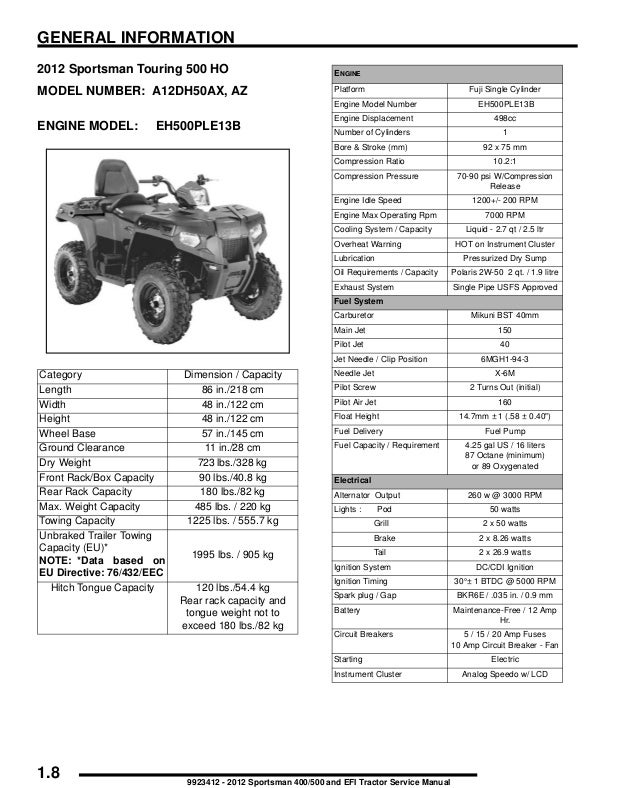 nine0003
nine0003
For example: you are driving on a flat packed dirt road on H and you see a large stretch of muddy road ahead with deep mud (or a steep hill, or bumps, or stones). You will have to come to a complete stop and shift to L, drive through mud, and when you get back on a dry road, come to a complete stop again and shift back to H. , like motorcycles, and a manual clutch lever on the handlebar on the left. nine0003
The foot lever device can be of two types:
The shift itself is carried out in the same way as on motorcycles:

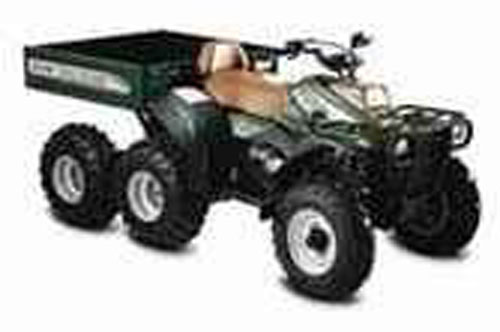 nine0008
nine0008 When exactly to switch speeds up and down is determined by the tachometer, speed, road complexity, weight of the load taken and the characteristics of the ATV itself (power, weight).
CVT gearboxes are much more common on ATVs. The clutch in them does not need to be squeezed out, and the “mode” of driving forward is selected from two (most often) options: in high (suitable for driving on an easy route) or in low (for difficult sections, steep climbs and towing) gears. nine0003
An important difference from driving in a manual transmission: switching between L and H is carried out only when the ATV is completely stopped, with the brake applied. To select a mode, move the knob to the desired position. Switching between L and H on the go is impossible.
The rest of the gears - park, neutral and reverse - of course, are also included when the ATV is standing still.
3 Day Delivery
All the most powerful performance and the smoothest ride of our versatile RZR models for comfortable travel alone or with friends.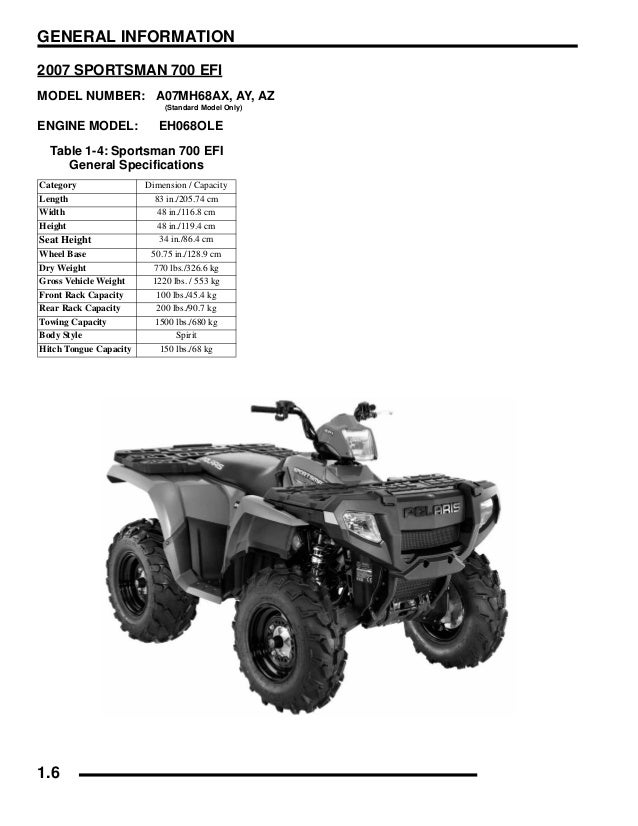
Guarantee 2 years
Free delivery in Moscow and region
Extended pre-sale preparation
8 (495) 133-94-92
Salon
2793000 ₽
02022 ATV Polaris RZR 60 Trail S 1000 Premium - Polaris Blue quantity nine0003
999cc SM
Engine volume
582kg
Weight
200.7cm
Wheel base
9000 9000 9000
From never-ending sand dunes to rocky trails, these ATVs take on all sorts of unexplored terrain and adventures, delivering adrenaline, excitement and a sense of freedom to those who ride them. nine0003
The new RZR lineup goes even further in performance, innovative technology and a special design focused primarily on rider comfort and convenience.
Take on the trail with the most agile, powerful and versatile next-generation RZR.
You'll know what's best in class as soon as you turn the key.
With instant acceleration, supreme power, up to 22 inches of usable suspension travel and DYNAMIX on-the-go damper adjustment, the new RZRs are unrivaled even on the toughest off-road terrain. nine0003
| Model year | 2022 |
|---|---|
| Downhill assistance | No |
| Cooling | Liquid |
| Engine size | 999 cc see |
| Drive | High Performance AWD/2WD |
| Engine braking (EBS) | Standard |
| Engine type | 4-stroke twin-cylinder DOHC |
| Fuel system | Electronic Fuel Injection (EFI) |
| Power | 100 HP nine0163 |
| Transmission | Automatic PVT P/R/N/L/H |
| Weight | 600 kg |
| Fuel tank capacity | 35. |
| Height | 176 cm |
| Length | 282 cm |
| Width | 152.4 cm | nine0164
| Seats | 2 |
| Luggage compartment | (LxWxH): 52.5 x 94 x 20 |
| Load capacity | 336 kg |
| Clearance | 31.8 cm |
| Seat height | No |
| Wheel base | 200.7 cm nine0163 |
| Brake system | 4 wheel hydraulic disc with front and rear double bore calipers |
| Parking brake | Park gear |
| Mounting system | Lock & Ride |
| Doors | Solid half doors |
| Suspension control | No |
| Front shock absorbers | 2" Walker Evans Needle with 16 Position Adjustment |
| Front suspension type | Double A-arm with anti-roll bar |
| Front suspension travel | 31. |
| Traction force | 680 kg | nine0164
| Tow bar type | Standard 1.25" (3.2 cm) |
| Lighting | Front LEDs in black with dipped/main beam, illuminated, red LED brake/tail lights |
| Rear shock absorbers | 2" Walker Evans Needle with 16 Position Adjustment |
| Rear suspension type | Double A-arm with anti-roll bar |
| Rear suspension travel | 33.5 cm |
| Seat | Roller Bucket Seats, Driver's Sled with Toolless Adjustment and Passenger Seat with Adjustment |
| Steering column adjustment | No |
| Front wheels | 27 x 9-12; Trailmaster A/T | nine0164
| Rear wheels | 27 x 11-12; Trailmaster A/T |
| Wheels | Cast aluminum |
| Color | Polaris Blue |
| Basic | Dual Toggle Analog Dials with 4" LCD Driver Information Center: User selectable blue/red backlight and brightness, programmable service intervals, speedometer, tachometer, odometer, tripmeter, clock, hour meter, gear indicator, Fuel Gauge, Coolant Temperature, Voltmeter, Service Indicator & Codes, Seat Belt Reminder Indicator, Gear Shift Indicator, DC Outlet + 12V Power Plug. |